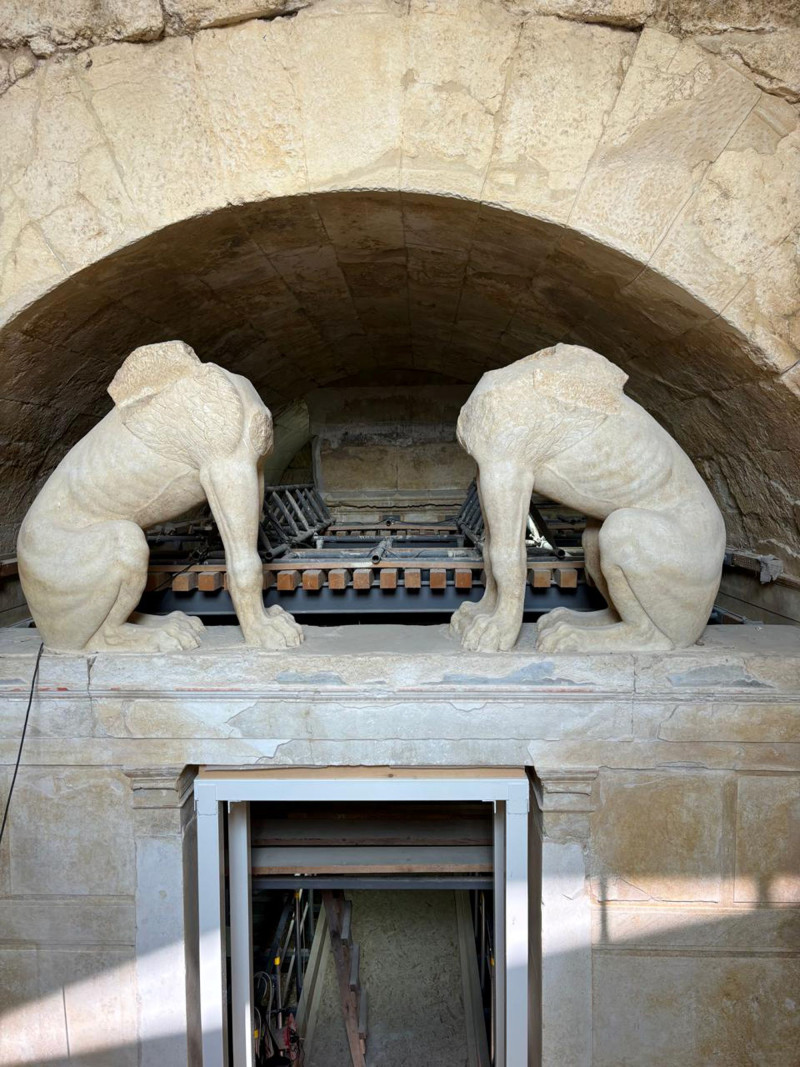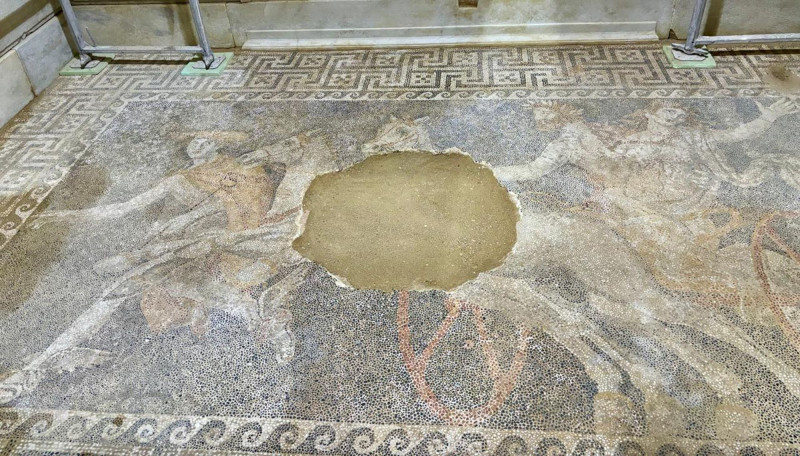The works are progressing within the timetables that have been set, with the aim of 2027 that the monument will be handed over to the citizens
The Minister of Culture Lina Mendoni conducted an autopsy on the works being carried out at the Kasta Tomb in Amphipolis, a unique burial monument in Greek territory with international visibility.
The works are progressing within the timetables that have been set, with the aim of 2027 that the monument will be handed over to the citizens
“Important milestones for the restoration of the monument are now complete. The dome, above the statues of the two sphinxes, has already been restored, in a standard way, so that no problem will arise in the future at the monument” said the Minister of Culture Lina Mendoni after the autopsy.
The first phase of the projects was included in the Regional Operational Program of Central Macedonia-ESPA 2014-2020, in 2018, with an initial budget of 1,500,000 euros.
In 2020, all the projects were redesigned and the budget revised, which was reinforced with an additional 300,000 euros from the PEP of Central Macedonia and with 400,000 euros from resources of the Ministry of Culture, as well as the timetable for the completion of the milestones.
The first phase, with the protection, maintenance and restoration works of the prominent monument as well as the Tomb, was completed within the revised timetables.
– In the burial monument, cleaning of the surfaces, filling of the cracks, as well as rearrangements of the marble fragments, which had been detached, were carried out.
– Scaffolding removed from the Rapture of Persephone mosaic area and cleaning of the mosaic completed.
– The didactic restoration of part of the enclosure was completed, as well as the design of the entrance to the burial monument.
– At the same time, the preparation of the final studies concerning the formation of the visiting routes around the Tomb, the creation of a museum space in direct connection with the monument and the creation of the infrastructure for the reception of visitors is being completed.
The Kasta Tomb is also known as the Tomb of Amphipolis, a name derived from the Macedonian burial monument of the early Hellenistic period, which was discovered inside the hill.
In the mid-1950s and up to the 1970s, excavations were made on the surface of the mound by the archaeologist Dimitris Lazaridis, who discovered a set of modest graves dating from the Iron Age.
The area began to be excavated around the perimeter again in 2012 by the archaeologist Katerina Peristeris and was shown to the general public in August 2014, the point in time when the first finds on the southern side of the mound were also discovered.
Source :Skai
I am Frederick Tuttle, who works in 247 News Agency as an author and mostly cover entertainment news. I have worked in this industry for 10 years and have gained a lot of experience. I am a very hard worker and always strive to get the best out of my work. I am also very passionate about my work and always try to keep up with the latest news and trends.












